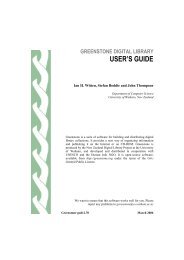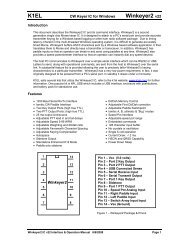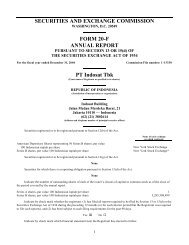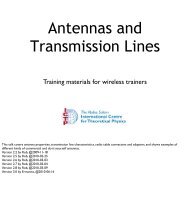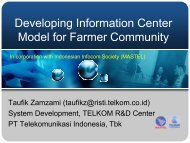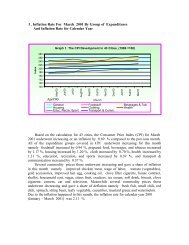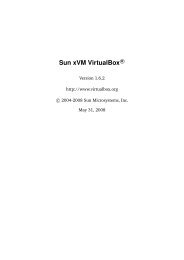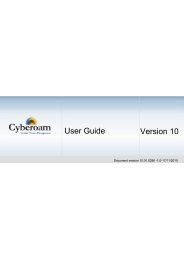WiMAXBrochure_RevE.pdf 2397KB Apr 16 2013 ... - mirror omadata
WiMAXBrochure_RevE.pdf 2397KB Apr 16 2013 ... - mirror omadata
WiMAXBrochure_RevE.pdf 2397KB Apr 16 2013 ... - mirror omadata
Create successful ePaper yourself
Turn your PDF publications into a flip-book with our unique Google optimized e-Paper software.
MicroMAX Operation<br />
The MicroMAX base station is highly<br />
modular in design and is constructed<br />
from a number of Base Station Radios<br />
(BSR). Each BSR incorporates antenna,<br />
radio and baseband functions all within<br />
the single BSR enclosure. Each BSR can<br />
be deployed with a built-in 60º sectorial<br />
antenna or indeed with a wide variety<br />
of external antennas including 360º<br />
omni, 90º, 120º etc. When multiple<br />
BSRs are deployed at the same physical<br />
location a BSDU can be used to<br />
aggregate the traffic from up to 8 BSRs.<br />
A seventh BSR may be supported for<br />
redundancy. The BSR will support both<br />
full duplex FDD and TDD operation.<br />
The fact that each BSR is self contained<br />
gives MicroMAX great deployment<br />
flexibility. For example, it is possible to<br />
start with one BSR and an omni<br />
antenna and progressively increase the<br />
number of deployed BSRs as more<br />
customers are signed up.<br />
MicroMAX provides extensive software<br />
features such as support for WiMAX<br />
specified service classes, full IEEE<br />
802.<strong>16</strong>-2004 transparent bridging<br />
features, IEEE 802.1Q/p VLAN features,<br />
and support for VoIP operation. The<br />
BSR will provide VoIP call supervision<br />
(or dynamic bandwidth allocation)<br />
enabling the radio interface to<br />
gracefully handle VoIP overload<br />
conditions by implementing an<br />
admission control procedure.<br />
The BSDU provides three main<br />
functions: aggregation of traffic from<br />
BSRs, powering the BSRs, and<br />
synchronising the BSRs by using an<br />
external GPS source.<br />
Due to its low power consumption, the<br />
MicroMAX BSRs is ideally suited for line<br />
powering. In this application up to 4<br />
twisted copper pairs can be used to<br />
both power and backhaul a BSR over a<br />
distance of up to 5km. This in turn<br />
enables tens of customers to be<br />
provided with wireless broadband<br />
services beyond the reach of DSL<br />
technology with an inbuilt cheap<br />
backhaul capability.<br />
Point-to-Point applications are also<br />
supported by the use of a single<br />
MicroMAX BSR coupled with a single<br />
ProST.<br />
This arrangement provides a very low<br />
cost solution for medium speed IP<br />
backhaul.<br />
MicroMAX fully supports the extensive<br />
QoS characteristics of the 802.<strong>16</strong> radio<br />
interface, including full support for UGS,<br />
rtPS, nrtPS and BE services classes.<br />
MicroMAX is managed by Netspan, the<br />
SNMP based central element<br />
management platform.<br />
MicroMAX Operation<br />
<strong>16</strong>





